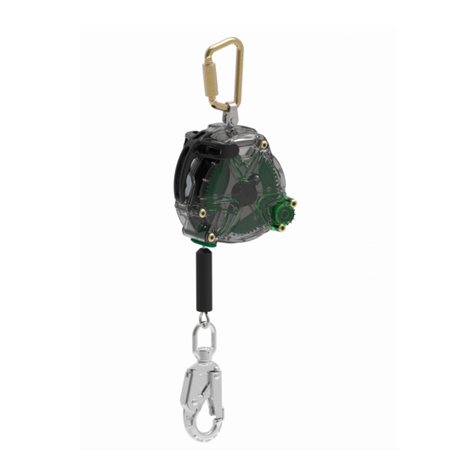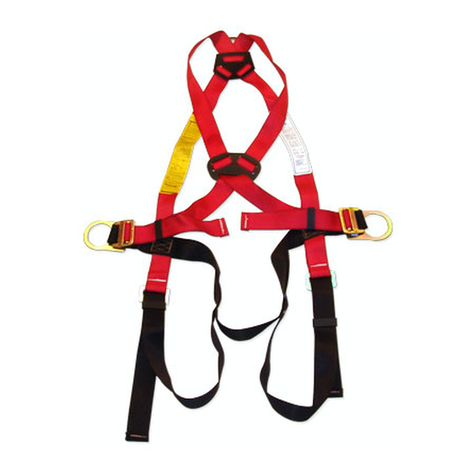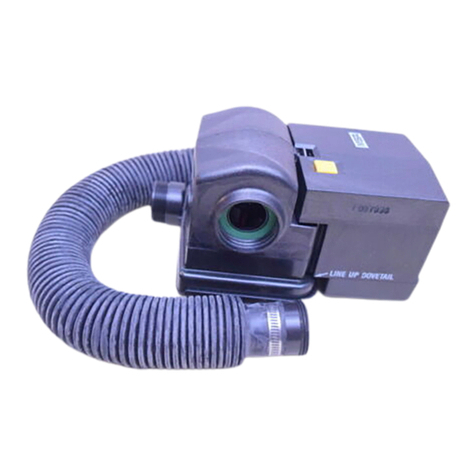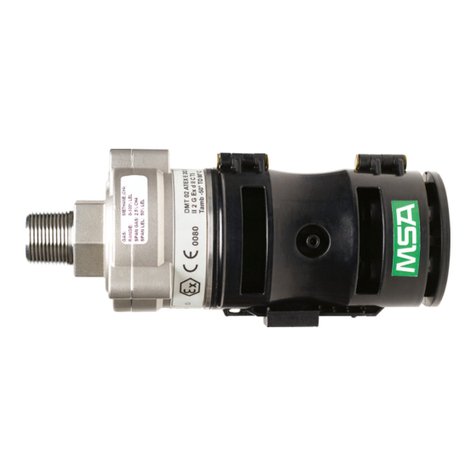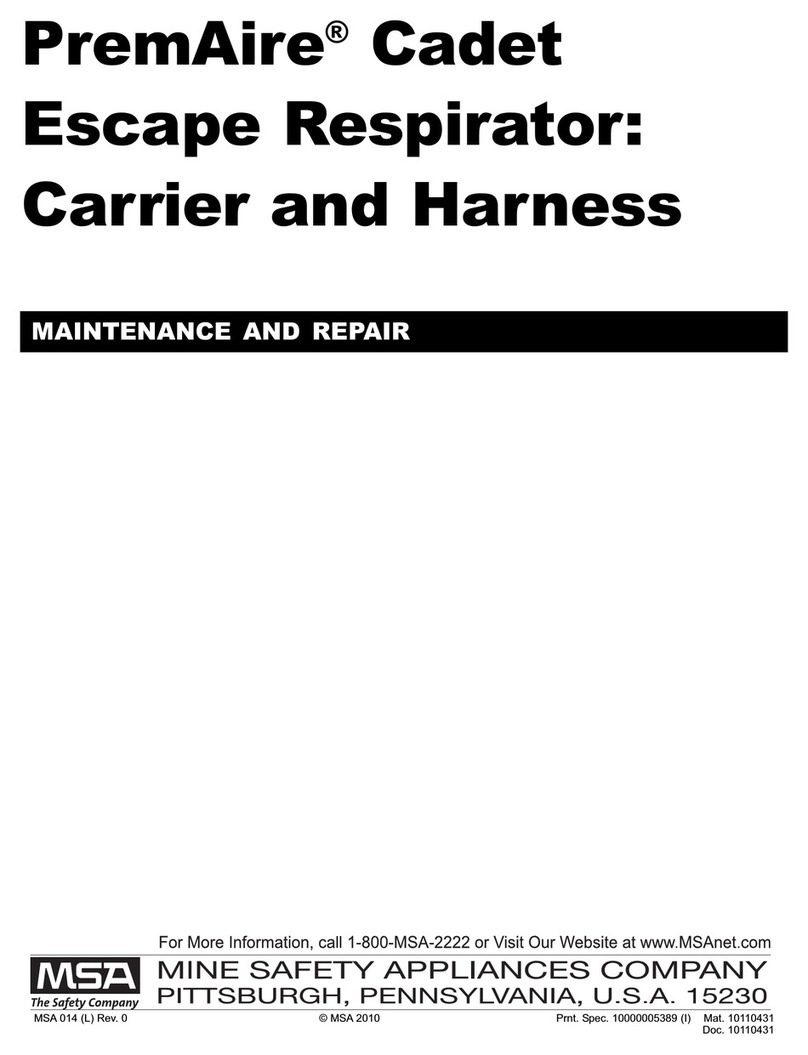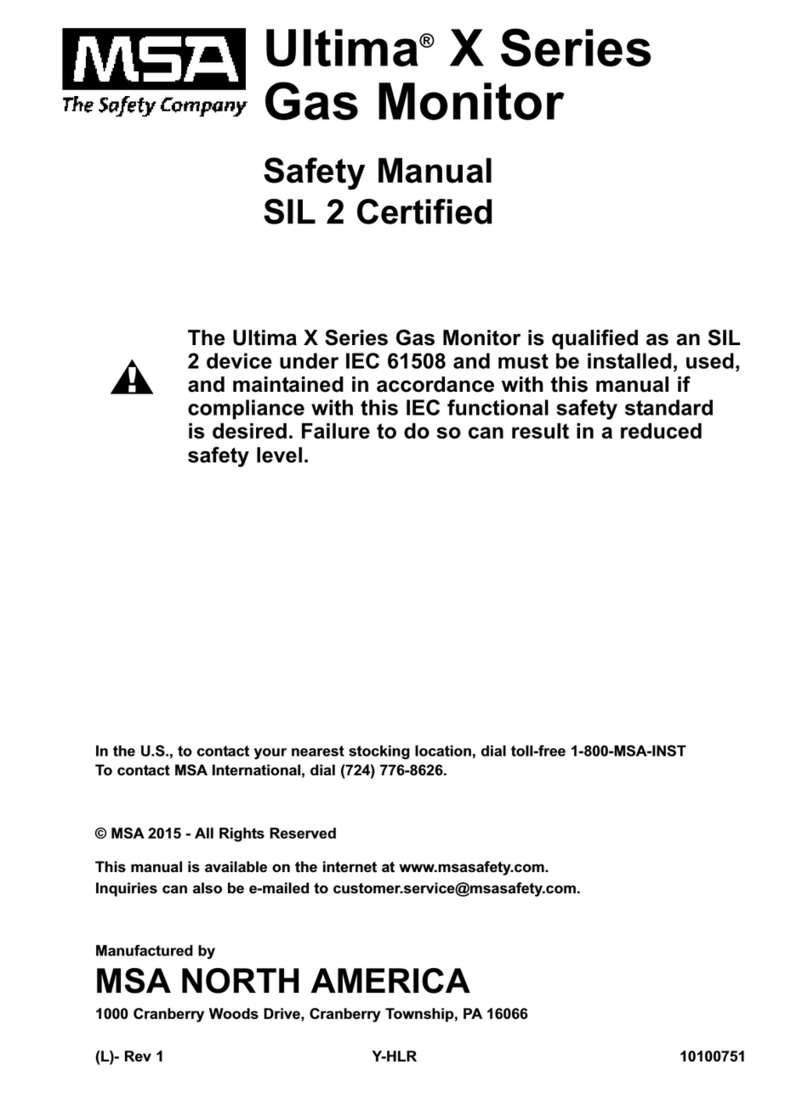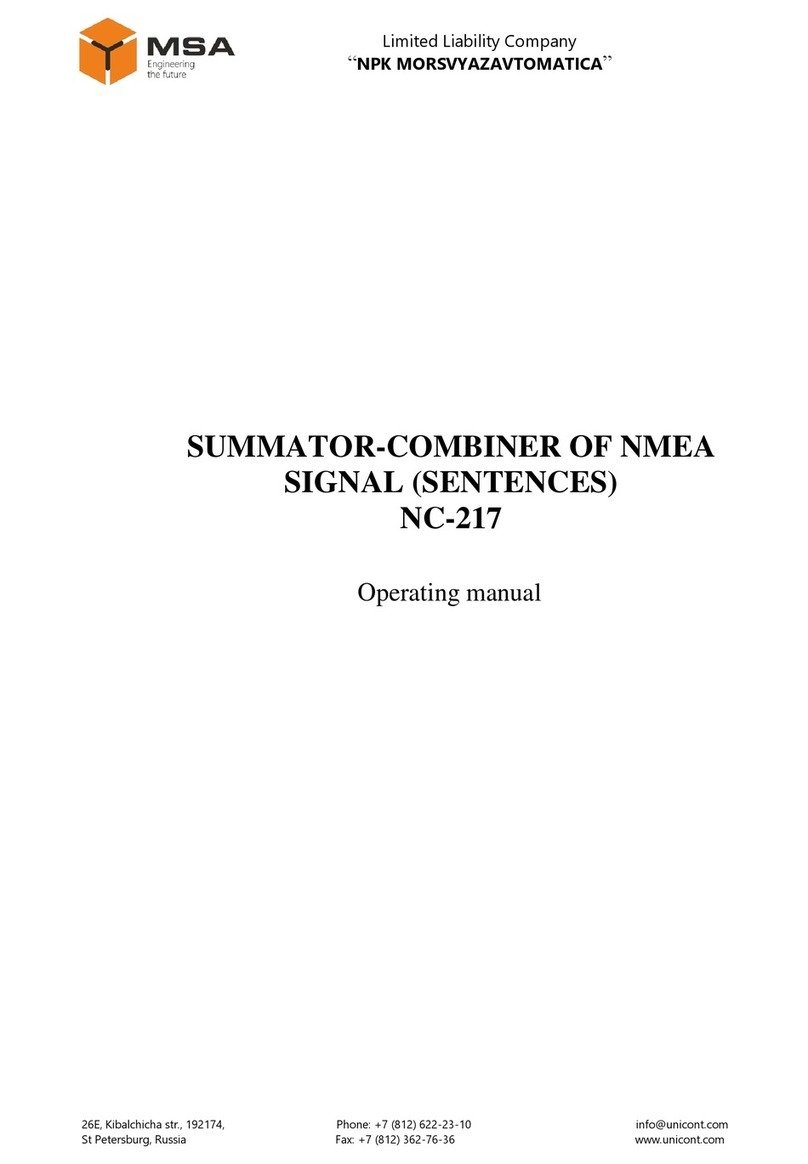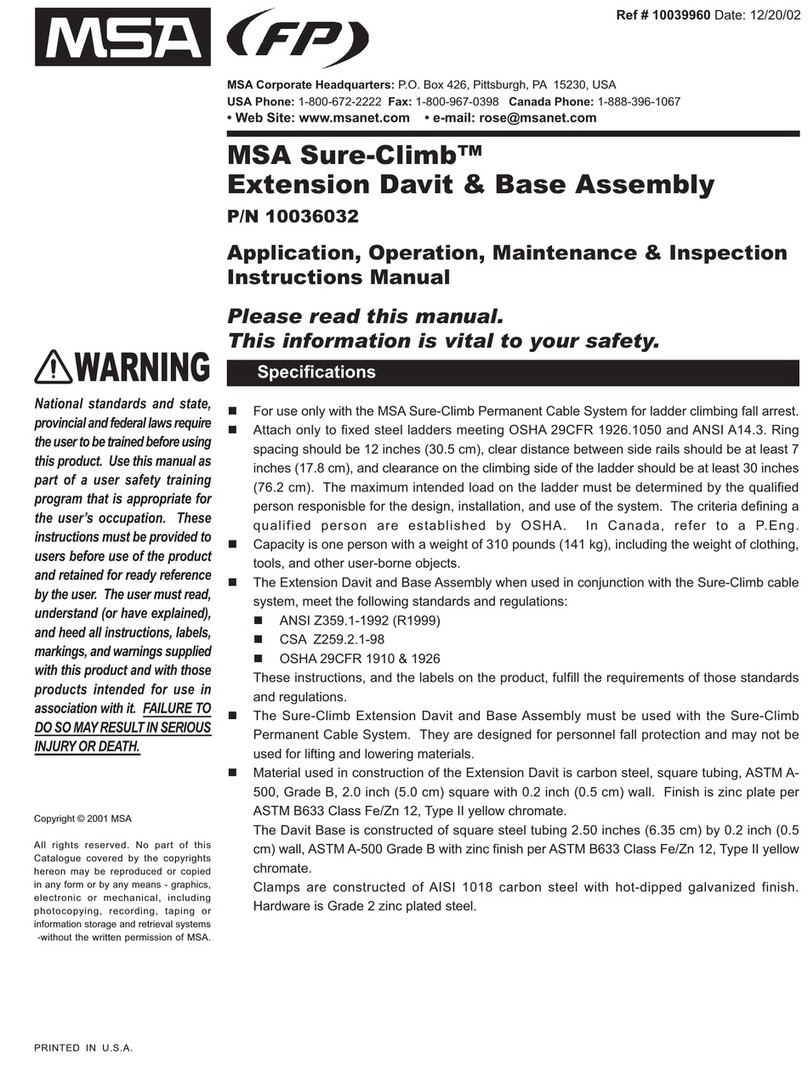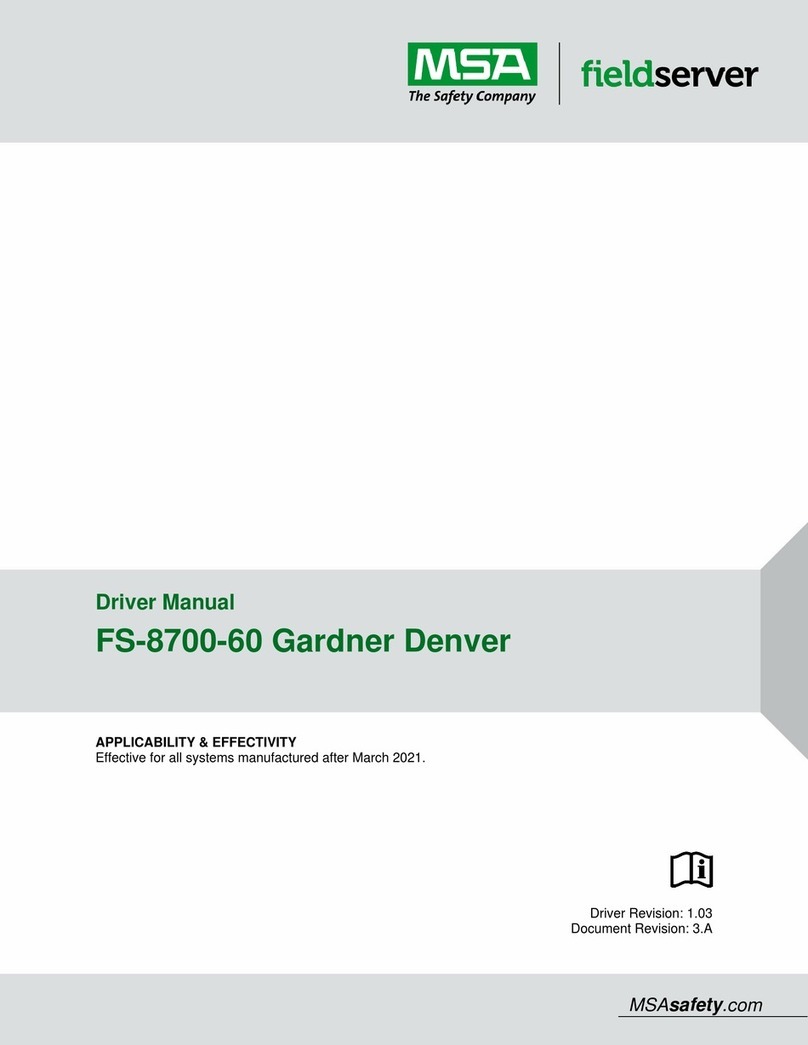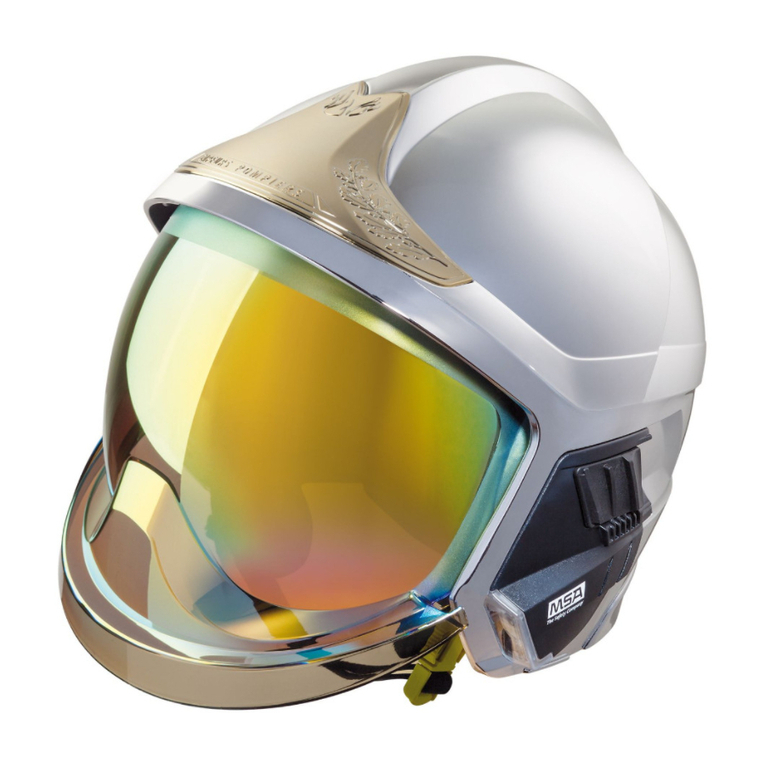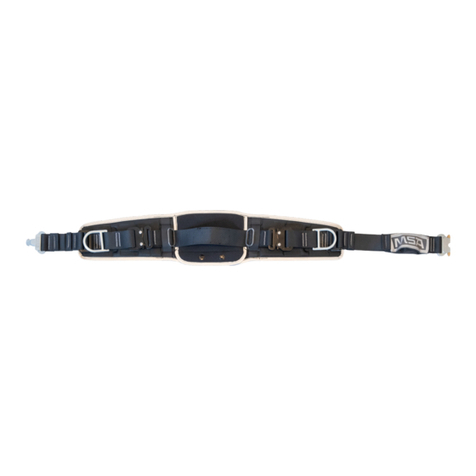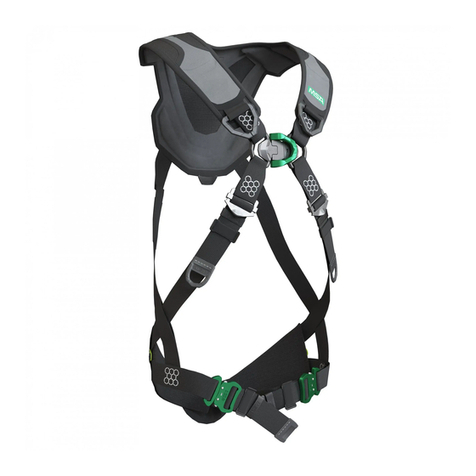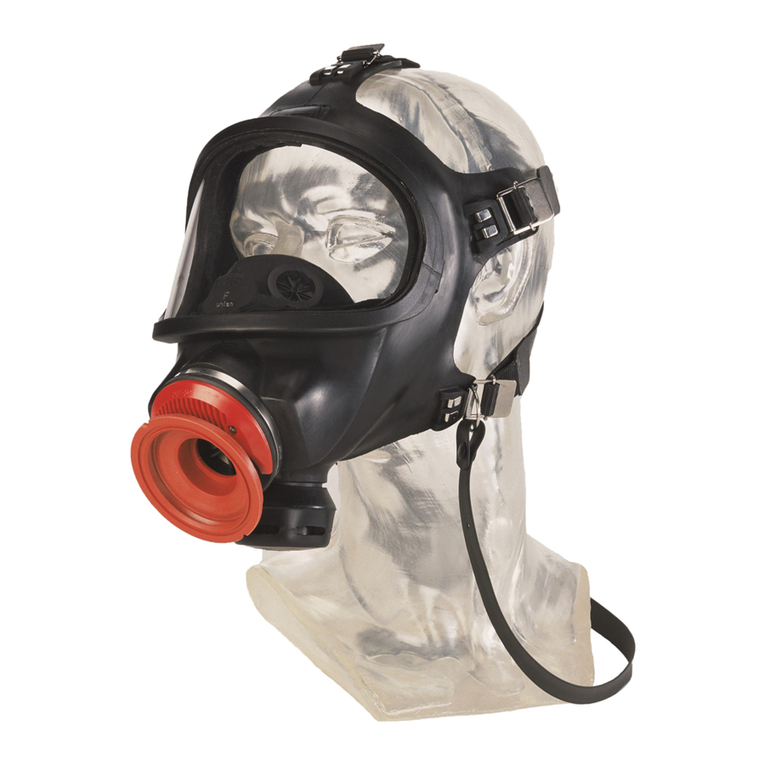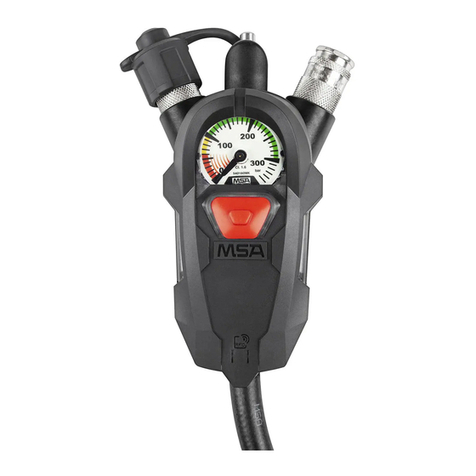
© 2012 MSA Page 3
User Instructions MSA Harnesses P/N 10083963
3.0 DESCRIPTION
Theintendedpurposeofeachelementintheharnessisgiveninsections3.1through3.2.
3.1 ATTACHMENT ELEMENTS (D-RINGS)
3.1.1 FALL ARREST ATTACHMENT (QTY 1)
AlsocalledbackD-Ring[CSAclassA],presentonallMSAHarnesses.Forfallarrest.UseonlythebackD-Ringforconnectiontotheotherelementsof
apersonalfallarrestsystem.ThebackD-Ringmayalsobeusedasanattachmentelementfortravelrestriction.
3.1.2 HIP ATTACHMENTS (QTY 2, IF PRESENT)
AlsocalledhipD-Rings.Forrestraint(workpositioningandtravelrestriction)[CSAclassP].NeverusethehipD-Ringsforfallarrestorforclimbing
protection.AlwaysusebothhipD-Ringstogether,forworkpositioningapplications.Whenworkpositioning,useaseparatefallarrestsystemattached
tothebackD-Ring.
3.1.3 FRONT ATTACHMENT (QTY 1, IF PRESENT)
AlsocalledchestD-Rings.Forcontrolleddescent,liftingandlowering(byhoisting),andforladderclimbingprotectionsystems(providedthepotentialfreefall
distanceisveryshortandfootingcanbeeasilygained)[CSAclassDandL].ThechestD-Ringmayalsobeusedforrescue,retrieval,andevacuation.
3.1.4 SHOULDER ATTACHMENTS (QTY 2, IF PRESENT)
AlsocalledshoulderD-Rings.Forrescueandretrievalliftingandlowering(byhoisting)[CSAclassE].NeverusetheshoulderD-Ringsforfallarrestor
climbingprotection.UsebothshoulderD-Ringstogether,neveronlyone.
3.0 DESCRIPCIÓN
Lanalidaddecadaelementodelarnésseestableceenlassecciones3.1a3.2.
3.1 ELEMENTOS DE SUJECIÓN (ANILLOS EN D)
3.1.1 DISPOSITIVOS DE SUJECIÓN PARA DETENCIÓN DE CAÍDAS (CANT. 1)
TambiénllamadosanillosdeespaldaenD[CSAclaseA],estánpresentesentodoslosarnesesMSA.Sonparadetenercaídas.Usesólolosanillosde
espaldaenDparahacerlaconexiónalosotroselementosdeunsistemapersonalparadetencióndecaídas.ElanillodeespaldaenDtambiénpuede
usarsecomoelementodesujeciónpararestringireldesplazamiento.
3.1.2 DISPOSITIVOS DE SUJECIÓN PARA CADERA (CANT. 2, SI LOS HUBIERA)
TambiénllamadosanillosdecaderaenD.Sonpararestringirelmovimiento(posicionamientoeneltrabajoyrestriccióndedesplazamiento)[CSAclase
P].NuncauselosanillosdecaderaenDparadetenercaídasnicomoprotecciónalsubir.SiempreuseambosanillosdecaderaenDjuntos,para
aplicacionesdeposicionamientoeneltrabajo.Cuandotomeposiciónenuntrabajo,useunsistemaseparadoparadetencióndecaídas,enganchado
enelanillodeespaldaenD.
3.1.3 DISPOSITIVO DE SUJECIÓN DELANTERA (CANT. 1, SI LO HUBIERA)
TambiénllamadosanillosenDparapecho.Parabajadascontroladas,elevarybajar(conelevador),yparasistemasdeprotecciónalsubirescaleras
demano(siemprequeladistanciapotencialdecaídalibreseamuycortaysepuedarecuperarconfacilidadelequilibrioparaponerseenpie)[CSA
clasesDyL].ElanilloenDparapechotambiénsepuedeusarpararescate,recuperaciónyevacuación.
3.1.4 DISPOSITIVOS DE SUJECIÓN PARA HOMBROS (CANT. 2, SI LOS HUBIERA)
TambiénllamadosanillosenDparahombros.Paraelevarybajar(conelevador)encasosderescateyrecuperación[CSAclaseE].Nuncauselosanillos
enDparahombrosparadetenercaídasnicomoprotecciónalsubir.UseambosanillosenDparahombrosjuntos,nuncaunosolo.
3.0 DESCRIPTION
Lerôledechaqueélémentduharnaisestexpliquédanslessections3.1à3.2.
3.1 ÉLÉMENTS D’ANCRAGE (ANNEAUX EN D)
3.1.1 ANCRAGE ANTICHUTE (QTÉ : 1)
ÉgalementappelésanneauxenDarrières[CSAclasseA].ComprisavectouslesharnaisMSA.Pourobteniruneprotectionantichute.Utiliserseulement
l’anneauarrièreenDpouraccrocherlesautresélémentsd’undispositifantichutepersonnel.L’anneauenDarrièrepeutégalementservird’élément
d’ancrage pour limiter le déplacement.
3.1.2 ANCRAGES LATÉRAUX (QTÉ : 2, LE CAS ÉCHÉANT)
ÉgalementappelésanneauxenDlatéraux.Pourlalimitationdesmouvements(positionnementpouruntravailetlimitededéplacement)[CSAclasseP].Ne
jamaisutiliserlesanneauxenDlatérauxcommedispositifsantichuteoupouruneprotectionlorsd’uneescalade.ToujoursutiliserlesdeuxanneauxenD
latérauxensemble,pourlepositionnement.Lorsd’unpositionnementpouruntravail,utiliserundispositifantichutedistinctxéàl’anneauenDarrière.
3.1.3 ANCRAGE AVANT (QTÉ : 1, LE CAS ÉCHÉANT)
ÉgalementappelésanneauxenDdepoitrine.Pourunedescente,unlevageetunabaissementcontrôlés(pardéplacementvertical)etpourdessystèmes
deprotectiondemontéeenéchelle(lorsqueladistancedechutelibrepotentielleesttrèscourteetqu’onpeutavoirpiedfacilement)[CSAclassDetL].
L’anneauenDdepoitrinepeutégalementservirpourlesauvetage,leretraitetl’évacuation.
3.1.4 ANCRAGES SUPÉRIEURS (QTÉ : 2, LE CAS ÉCHÉANT)
ÉgalementappelésanneauxenDsupérieurs.Pourlamontéeetladescentelorsdesauvetageetderetrait(pardéplacementvertical)[CSAclasse
E].NejamaisutiliserlesanneauxenDsupérieurscommedispositifantichuteoudeprotectiond’escalade.UtiliserlesdeuxanneauxenDsupérieurs
ensemble,jamaisunseul.
CSA CLASS L
CSA CLASE L
CSA CLASSE L
CSA CLASS E
CSA CLASE E
CSA CLASSE E
Designedforusewithfallrestrict
systemsinvolvingtheuseofClass
ASorFRLfallarresterthattravels
onaverticallifelineorrail,as
described in CAN/CSA-Z259.2.1.
These systems are typically
mountedonoradjacenttoladders
or towers.
Diseñado para el uso con
sistemas de restricción de
caídasqueincluyanelusodeun
sistemadedetencióndecaídas
claseASoFRLquesedesplaza
enuncabosalvavidasoriel
vertical,comosedescribeenla
norma CAN/CSAZ259.2.1. Estos
sistemassemontancomúnmente
sobre o adyacentes a escaleras
o torres.
Conçupouruneutilisationavec
dessystèmesd’arrêtdechute
quiutilisentundispositifantichute
deClasseASouFRLquise
déplace sur une longe ou un rail
vertical,commeilestdécritdans
CAN/CSAZ259.2.1. Ces
systèmes sont habituellement
montés sur des échelles ou des
toursouàproximitédetelles
structures.
Designedtosupportaworkerina
positionthatreducestheworker’s
proleduringpassagethrougha
limitedaccessarea.Hoistingofthe
workerisusuallyinvolved.
Diseñadoparasosteneraun
trabajadorenunaposiciónque
reduzcaelperfildeltrabajador
cuandopaseporunáreade
acceso limitado. Generalmente,
involucra la elevación del
trabajador.
Conçupoursouteniruntravailleur
dans une position qui réduit
sonprofillorsdesonentrée
dansunespacerestreint.Le
hissagepartreuildutravailleur
est habituellement impliqué.
